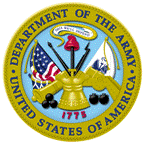Authors
Mark E. Polhemus, Walter Reed Army Institute of Research (WRAIR), Silver Spring, MD, United States
Alan J. Magill, Walter Reed Army Institute of Research (WRAIR), Silver Spring, MD, United States
James F. Cummings, Walter Reed Army Institute of Research (WRAIR), Silver Spring, MD, United States
Kent E. Kester, Walter Reed Army Institute of Research (WRAIR), Silver Spring, MD, United States
Chris F. Ockenhouse, Walter Reed Army Institute of Research (WRAIR), Silver Spring, MD, United States
David E. Lanar, Walter Reed Army Institute of Research (WRAIR), Silver Spring, MD, United States
Sheetij Dutta, Walter Reed Army Institute of Research (WRAIR), Silver Spring, MD, United States
Arnoldo Barbosa, Walter Reed Army Institute of Research (WRAIR), Silver Spring, MD, United States
Lorraine Soisson, U.S. Agency for International Development, Washington, DC, United States
Carter L. Diggs, U.S. Agency for International Development, Washington, DC, United States
Sally A. Robinson, Walter Reed Army Institute of Research (WRAIR), Silver Spring, MD, United States
John D. Haynes, Walter Reed Army Institute of Research (WRAIR), Silver Spring, MD, United States
V. Ann Stewart, Walter Reed Army Institute of Research (WRAIR), Silver Spring, MD, United States
Lisa A. Ware, Walter Reed Army Institute of Research (WRAIR), Silver Spring, MD, United States
Clara Brando, Walter Reed Army Institute of Research (WRAIR), Silver Spring, MD, United States
Urszula Krzych, Walter Reed Army Institute of Research (WRAIR), Silver Spring, MD, United States
Robert A. Bowden, Walter Reed Army Institute of Research (WRAIR), Silver Spring, MD, United States
Joe D. Cohen, GlaxoSmithKline Biologicals, Rixensart, Belgium
Marie-Claude Dubois, GlaxoSmithKline Biologicals, Rixensart, Belgium
Opokua Ofori-Anyinam, GlaxoSmithKline Biologicals, Rixensart, Belgium
Els De-Kock, GlaxoSmithKline Biologicals, Rixensart, Belgium
W. Ripley Ballou, GlaxoSmithKline Biologicals, Rixensart, Belgium
D. Gray Heppner Jr., Walter Reed Army Institute of Research (WRAIR), Silver Spring, MD, United States
Date of this Version
2007
Abstract
We report the first safety and immunogenicity trial of the Plasmodium falciparum vaccine candidate FMP2.1/AS02A, a recombinant E. coli-expressed protein based upon the apical membrane antigen-1 (AMA-1) of the 3D7 clone formulated with the AS02A adjuvant. We conducted an open-label, staggered-start, dose-escalating Phase I trial in 23 malaria-naıve volunteers who received 8, 20 or 40 _g of FMP2.1 in a fixed volume of 0.5mL of AS02A on a 0, 1, and 2 month schedule. Nineteen of 23 volunteers received all three scheduled immunizations. The most frequent solicited local and systemic adverse events associated with immunization were injection site pain (68%) and headache (29%). There were no significant laboratory abnormalities or vaccine-related serious adverse events. All volunteers seroconverted after second immunization as determined by ELISA. Immune sera recognized sporozoites and merozoites by immunofluorescence assay (IFA), and exhibited both growth inhibition and processing inhibition activity against homologous (3D7) asexual stage parasites. Post-immunization, peripheral blood mononuculear cells exhibited FMP2.1-specific lymphoproliferation and IFN-γ and IL-5 ELISPOT assay responses. This is the first PfAMA-1-based vaccine shown to elicit both potent humoral and cellular immunity in humans. Encouraged by the potential of FMP1/AS02A to target host immunity against PfAMA-1 that is known to be expressed by sporozoite, hepatic and erythrocytic stages, we have initiated field trials of FMP2.1/AS02A in an endemic population in the Republic of Mali.



Comments
Published in Vaccine 25 (2007) 4203–4212.